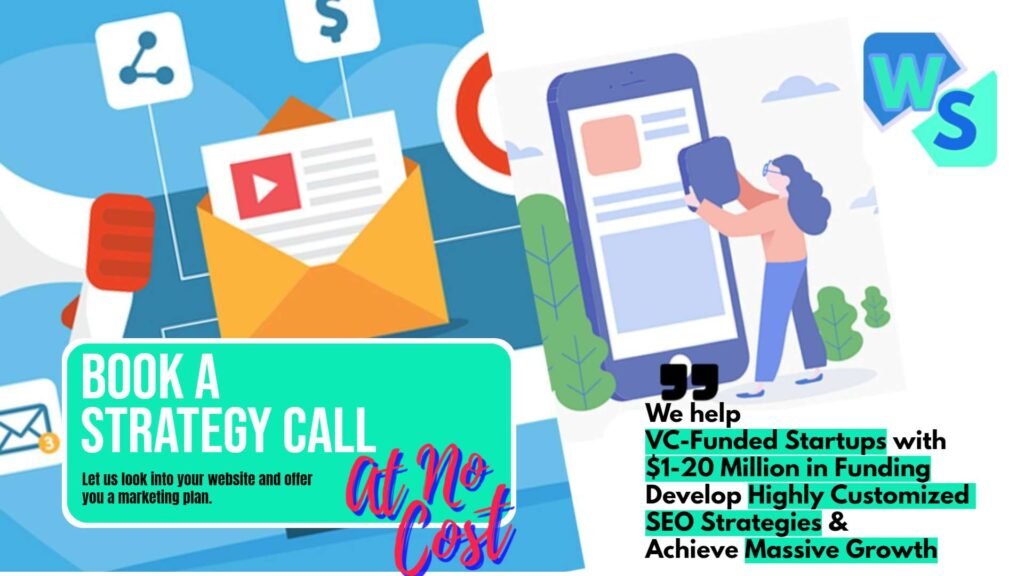For CEOs, especially those running lean operations or startups, making the right choice between outsourcing and handling tasks in-house is a critical decision. It’s all about balance—choosing the option that maximizes value without stretching resources too thin. Both approaches come with their own advantages and challenges, and deciding which to pursue depends on your company’s specific needs, budget, and long-term goals.
In this article, we’ll explore when to outsource and when to keep work in-house, focusing on return on investment (ROI) to guide you. You’ll find practical insights on evaluating costs, understanding the hidden factors, and making smart, budget-conscious choices that deliver the best results.
The ROI of Outsourcing vs. In-House: Starting with the Basics
Defining the Core Differences
Outsourcing involves hiring external professionals or agencies to handle certain tasks, often those requiring specific expertise or that fall outside the core competencies of your team. This could include anything from IT support, content creation, and social media management to accounting, design, or specialized technical roles. The main benefit of outsourcing is access to expertise without the commitment of hiring full-time staff.
In-house work, on the other hand, relies on your internal team. You either assign existing employees to handle these tasks or hire new team members to manage them. Keeping work in-house provides more control over processes, quality, and timelines. In some cases, it’s essential for maintaining a cohesive company culture or proprietary knowledge.
Understanding ROI for Each Approach
Return on investment in this context goes beyond immediate costs. It includes factors like productivity, quality, speed, scalability, and long-term impact on your business. If outsourcing costs less while delivering high-quality work, it’s likely a better choice from an ROI perspective. But if in-house work leads to improved team cohesion, faster responses, and greater alignment with company goals, then keeping it in-house may deliver greater value.
When Outsourcing Delivers the Best ROI

When Specialized Skills Are Required
One of the clearest cases for outsourcing is when specialized skills are needed. Hiring in-house for specialized roles can be costly and impractical, especially if the skills are needed only for a short-term project. For example, if you need a one-time website redesign or a specific marketing campaign, hiring a full-time web designer or digital marketing expert may not be worth the investment.
In these cases, outsourcing allows you to bring in experts for as long as needed, paying only for the project duration. This flexibility saves your company from the costs and commitment of a permanent hire. Additionally, experienced professionals often deliver higher quality, faster results due to their expertise, boosting ROI.
When Speed is Critical
If a project needs to be completed quickly, outsourcing can offer a major advantage. Specialized agencies and freelancers have processes in place to hit the ground running and often work on tight deadlines. Outsourcing allows you to bring in skilled help immediately, avoiding the onboarding time and learning curve associated with new in-house employees.
For instance, if you need to respond quickly to a new market trend with a content blitz or launch a social media campaign in a short timeframe, outsourcing can give you the agility to act fast. In such scenarios, the ability to meet deadlines and capture time-sensitive opportunities can be worth the cost of hiring externally.
When Flexibility and Scalability Are Key
Outsourcing allows you to scale up or down based on demand, which is ideal for businesses that experience seasonal fluctuations or project-based needs. For example, if your company has an influx of customer service inquiries during the holiday season, outsourcing provides a way to handle the increased workload without committing to long-term hires.
Scalability is crucial for growth without overextending resources. By outsourcing tasks like customer support or content creation, you can bring in additional resources as needed, adjusting based on workload without the financial risks of expanding your in-house team.
When Cost Control is Crucial
For CEOs working with tight budgets, outsourcing can offer significant savings. While the hourly rate of a freelancer or agency may seem high, consider the costs that go beyond a salary for in-house employees—benefits, training, and infrastructure can add up quickly. Outsourcing eliminates these overhead costs, offering a more predictable, controlled expense.
If your business needs short-term expertise or project-based work, outsourcing is often a more cost-effective solution than hiring permanent staff. It allows you to budget for specific tasks without the ongoing costs associated with new employees.
When a Fresh Perspective is Beneficial
Sometimes, an external viewpoint brings valuable insights and creative ideas. If you’re facing challenges in branding, product positioning, or customer engagement, outsourcing to experts with a fresh perspective can provide the breakthrough ideas your team may not have considered.
Agencies and freelancers who work with multiple clients often bring a wealth of industry knowledge and best practices. Their broader view and outside insights can help your brand avoid “echo chamber” thinking, leading to fresh, innovative approaches that resonate with your target audience.
When In-House Delivers the Best ROI

When Projects Demand Constant Collaboration
Projects requiring frequent communication, iteration, and collaboration often benefit from being handled in-house. Having team members who can connect immediately and collaborate with ease reduces misunderstandings and shortens feedback loops. This is especially important for complex projects or tasks that require multiple departments to work closely together, such as product development or internal marketing strategies.
In-house work ensures that team members are aligned with your brand’s values, culture, and long-term vision. It creates a collaborative environment that promotes quick decision-making and seamless integration between departments, which is often harder to achieve with outsourced partners.
When Brand Consistency and Culture Matter
For tasks directly related to your brand’s voice, messaging, or public representation, an in-house approach often yields better results. In-house teams have a more intuitive understanding of your brand and are more attuned to subtle elements that outsiders might miss. Whether it’s social media, customer interactions, or email marketing, these brand-centered tasks benefit from the personal connection and brand familiarity of an in-house team.
Additionally, company culture plays a role in brand consistency. Team members who understand your brand’s mission and values will naturally reflect them in their work. Outsourcing can sometimes lead to inconsistencies in tone, message, or quality, which can dilute your brand’s image over time.
When Long-Term Knowledge and Intellectual Property Are Involved
If a project involves proprietary information, sensitive data, or the development of long-term institutional knowledge, in-house work may be the better choice. Keeping knowledge-based work within the company safeguards intellectual property and prevents valuable know-how from being passed to external parties. This can be essential for product development, R&D, or certain strategic initiatives.
For example, if your team is developing a unique software solution, building it in-house ensures that all knowledge remains with your company, making future updates and improvements easier. The in-house approach also helps build a solid knowledge base that can drive innovation and contribute to your brand’s competitive edge.
When You Want Greater Control Over Quality and Timelines
In-house teams offer greater control over quality and timelines, as team members are directly accountable to company standards. While outsourcing partners may provide excellent work, they are not as closely connected to your internal processes or standards, which can sometimes lead to misalignment.
If quality assurance is critical or if your brand relies on precise, consistent standards, bringing the work in-house may be worth the investment. In-house teams have more flexibility to iterate and refine work until it meets company expectations, making it easier to deliver consistent results over time.
When It’s Essential to Build and Retain Core Capabilities
If a task or role is central to your business’s mission and ongoing needs, building these capabilities in-house creates long-term value. For example, if data analysis or SEO is critical for your growth strategy, it might be beneficial to build an in-house team skilled in these areas rather than relying on external agencies. Over time, you’ll develop core strengths that contribute directly to your company’s success.
Investing in in-house skills also builds a team that understands the nuances of your business, your audience, and your industry. This institutional knowledge becomes an asset, allowing your team to work more effectively and proactively, which contributes to long-term ROI.

Related: Check out our free SEO suite

Assessing Costs: Making a Data-Driven Decision
Calculate Total Costs for Both Options
To make an informed decision, start by calculating the full costs of both outsourcing and hiring in-house. For in-house work, consider not just salaries but also benefits, recruitment costs, onboarding time, software and infrastructure, and ongoing training. These additional expenses can add up quickly, especially for specialized roles.
For outsourcing, evaluate hourly or project-based fees, any additional fees (like rush charges), and the cost of managing outsourced work. Some projects might require you to hire a project manager to oversee outsourced work, adding to the cost. By comparing these calculations, you’ll have a clearer picture of the true costs involved in both options.
Factor in Hidden Costs
Beyond the obvious costs, there are hidden factors to consider. For in-house work, there’s often a time investment in training and onboarding, which affects productivity. For outsourcing, the cost of miscommunication, revisions, or lower-than-expected quality can add up, especially if the project requires extensive back-and-forth.
Another hidden cost of outsourcing is the potential impact on team morale. If certain functions are outsourced, your in-house team might feel disconnected or undervalued, which can affect productivity and motivation. Similarly, the loss of knowledge from outsourcing certain functions can lead to longer-term dependency on external providers, which can be costly over time.
Balancing Short-Term Savings with Long-Term Value

Weigh Immediate Costs Against Future Benefits
When considering outsourcing, think beyond immediate savings and evaluate long-term value. For instance, outsourcing design work might save money in the short term, but hiring an in-house designer could yield better brand consistency over time, ultimately enhancing your brand’s appeal.
On the other hand, outsourcing tasks like payroll or customer support can save substantial costs in the long run by reducing the need for in-house hires and allowing your core team to focus on strategic priorities. Consider each option’s short-term costs and long-term impact on your brand’s growth and sustainability.
Consider the ROI of Building vs. Borrowing Expertise
Investing in expertise means deciding whether it’s worth training your team to build certain skills in-house or bringing in external experts to handle them. For instance, building a high-performing SEO team in-house requires extensive time and resources. Outsourcing to an SEO agency provides immediate expertise without the learning curve, offering a faster path to results.
Decide which skills are worth developing in-house for lasting impact and which ones can be borrowed through outsourcing without compromising your brand’s integrity or goals. By strategically choosing where to invest in skills, you maximize ROI on each function, allowing your team to grow and thrive without stretching resources.
Practical Tips for Making the Right Choice
Test Outsourcing on a Small Scale
If you’re uncertain about whether outsourcing will deliver the results you need, start with a small test project. This allows you to evaluate the quality of work, communication, and overall fit with minimal commitment. For instance, if you’re considering outsourcing content creation, try a short-term project like a blog post series to gauge the quality and speed.
Testing outsourcing on a small scale provides valuable insights that help you make more confident decisions. If it works well, you can expand the partnership; if it doesn’t, you’ve minimized your risk.
Combine In-House and Outsourced Teams Strategically
Sometimes, a hybrid approach offers the best of both worlds. For example, keep strategic functions in-house while outsourcing specific tasks. You could have an in-house marketing manager who oversees overall strategy while outsourcing design or analytics work to specialists. This approach ensures control over key functions while maximizing efficiency and flexibility.
A hybrid model can also reduce pressure on your internal team, allowing them to focus on strategic tasks that require a deep understanding of your brand. With selective outsourcing, you can strike a balance that keeps your business agile, focused, and scalable.
Regularly Review Your Approach
Business needs evolve, and what works today may not be ideal next year. Make it a point to review your outsourcing and in-house strategies regularly. Assess whether your current approach aligns with your growth goals, budget, and evolving needs. Flexibility in this decision-making process ensures that you continue to get the best ROI, adapting to changing market conditions and new opportunities.
Regular reviews allow you to adjust your approach, bringing more work in-house or outsourcing additional tasks as your business scales. This adaptability keeps your operations efficient and your budget focused on what truly drives results.
Building a Scalable Strategy for Long-Term Success

Ultimately, the goal of balancing in-house and outsourced work is to create a scalable strategy that adapts to your company’s evolving needs. A scalable approach means you’re prepared for growth without overcommitting resources, allowing you to manage costs effectively and maximize ROI as your company expands.
Develop a Strategic Roadmap for Skills Development
When it comes to in-house capabilities, having a roadmap for skills development is essential for building long-term value. Identify key skills that will be valuable as your company grows and develop a plan to gradually build these competencies within your team. This could include training on emerging digital marketing trends, data analysis, or project management—skills that enhance your team’s capabilities and reduce the need for outsourcing over time.
A strategic approach to skills development also makes your team more adaptable, able to take on new roles as needed without extensive hiring. With a roadmap in place, you’re investing in an in-house team that can handle core functions, maintain brand consistency, and support growth with minimal outside dependence.
Cultivate Strategic Partnerships with Trusted Vendors
For the tasks that you choose to outsource, it’s beneficial to cultivate long-term, strategic partnerships with trusted vendors. Building relationships with agencies or freelancers who understand your brand’s goals and culture allows for smoother collaboration and higher-quality results over time. When your partners are invested in your success, they’re more likely to go the extra mile and provide valuable insights to help your company grow.
Consider establishing clear terms for partnerships, including expectations, communication protocols, and performance metrics. By formalizing these relationships, you create a strong foundation for reliable, mutually beneficial partnerships that support your company’s scalability and flexibility.
Keep Scaling in Mind with Every Decision
For every outsourcing or in-house decision, ask how it aligns with your future goals and growth plans. Scalability should be a factor in each choice. For example, if you’re building a marketing strategy that could quickly expand as your company grows, consider whether your current team can handle this increased workload or if a reliable outsourcing partner is a better option.
A scalable approach helps you stay lean, adaptive, and cost-efficient, even as your business grows. When you choose solutions with scalability in mind, you ensure that your company can adjust quickly to changes in demand, market shifts, or growth opportunities, all while maximizing ROI.
Conclusion: A Balanced, ROI-Driven Approach
For CEOs working with limited budgets, deciding between outsourcing and in-house work is all about maximizing return on investment. By understanding the strengths of each approach, assessing costs carefully, and making informed, data-driven decisions, you can allocate resources strategically.
Whether you choose to outsource for flexibility and expertise or keep work in-house for control and consistency, the right approach depends on your company’s unique needs and goals. Embrace a balanced, flexible mindset, and remember that the ultimate goal is to drive growth, efficiency, and long-term success. With a thoughtful approach, you can maximize your impact, make every dollar count, and build a resilient, future-ready brand.
READ NEXT:
- Are Vanity Metrics Killing Your Marketing Efficiency? Here’s What to Track Instead
- Pinpointing Digital Marketing ROI: Why Your Metrics Aren’t Telling the Full Story
- Unlocking Real ROI in Digital Marketing: The Hidden Costs Draining Your Budget
- How Misaligned Marketing Funnels Are Blocking Your ROI Potential
- Best Digital Marketing Agency In Santa Ana, California
- Best Digital Marketing Agency In San Francisco, California





















